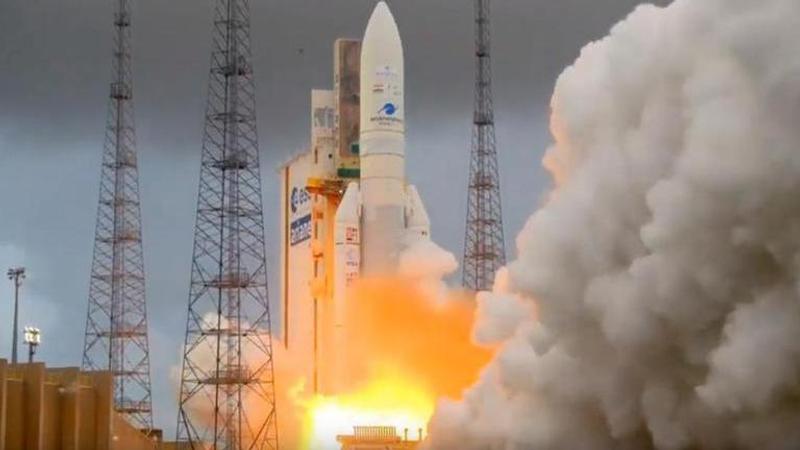Published 02:57 IST, January 17th 2020
Ariane 5 rocket VA251 successfully launches India's first satellite of 2020 GSAT-30
The Ariane5 flight VA251 carrying ISRO's ‘GSAT-30’ and Eutelsat Konnect satellites was successfully liftoff from French Guiana on January 17 by Arianespace

The Ariane5 flight VA251 carrying ISRO's ‘GSAT-30’ and Eutelsat Konnect satellites was successfully liftoff from French Guiana at 2.35 am IST on January 17, 2020, by Arianespace. The launch of the communication satellite is ISRO’s first satellite launch of the year 2020. This satellite will help expand the coverage of Indian DTH (Direct-to-Home) to a larger audience in Asia, which means Indians settled abroad can enjoy Indian DTH services. This satellite will be India's first launch of this decade.
Watch here:
The mission life of 15 years
ISRO said the GSAT-30 is to serve as a replacement to INSAT-4A spacecraft services which had a limited coverage area. INSAT-4A’s usage of the Ku-band and C-band is how DTH operators like TataSky, Airtel TV, Dish TV and others provide services to customers in India. The GSAT-30 will provide Indian mainland and islands coverage in Ku-band and extended coverage in C-band covering Gulf countries, a large number of Asian countries and Australia, according to ISRO. Geo-stationery satellites that orbit Earth at the altitude of over 35,000 km above the equator are used for transmission of television channels. Satellite transmission of television channels is usually done using two types of bands – C band with frequencies ranging from 4.0 to 8.0 gigahertz and Ku Band with frequencies ranging between 12 to 18 gigahertz.
The 3,357 kg GSAT-30 is said to have a mission life of 15 years wherein it will be an operational communication satellite for DTH, television uplink and VSAT services. The satellite is a successor of the INSAT/GSAT satellite series. INSAT-4A was launched in 2005 and designed to last 12 years, however, its advanced tech allowed it to serve for fifteen years.
The Indian space agency has planned to work on as many as 25 missions in 2020, including Chandrayaan 3 and Gaganyaan mission simultaneously. ISRO Chairman K Sivan, however, stated that the planning for the first unmanned mission, which was slated for this year, may slip over to next year.
(with ANI inputs)
(image: Twitter/@isro)
Updated 03:40 IST, January 17th 2020




